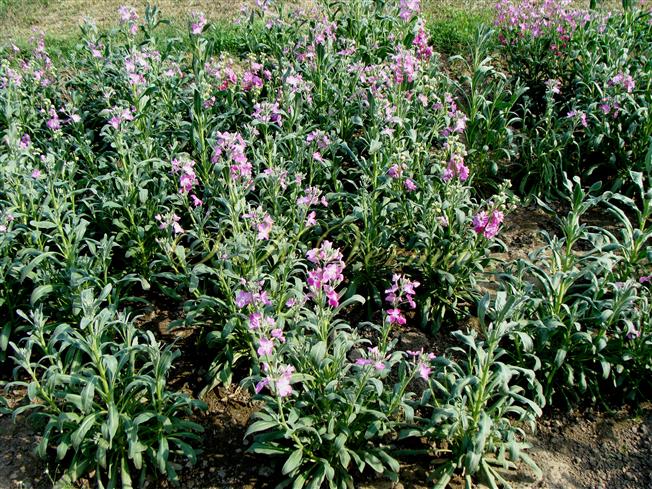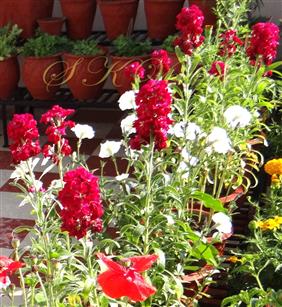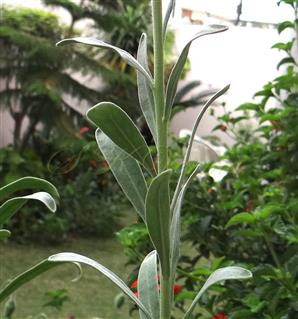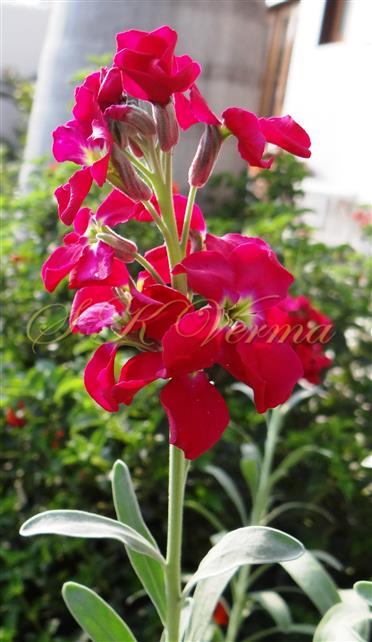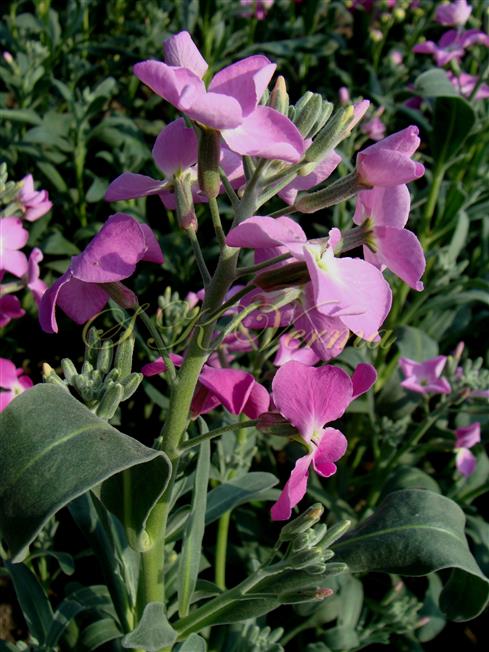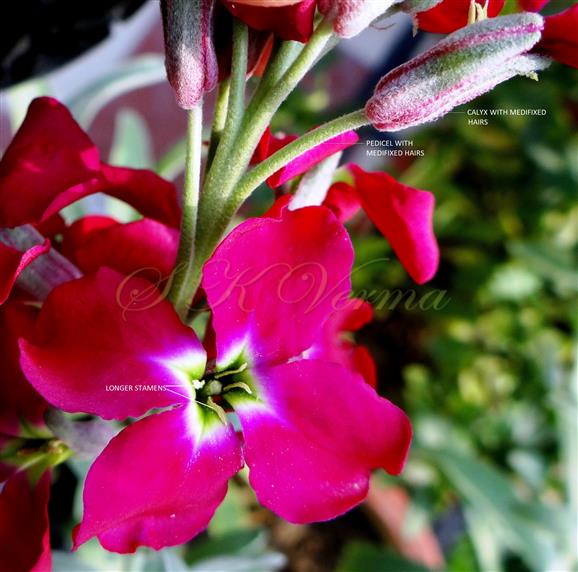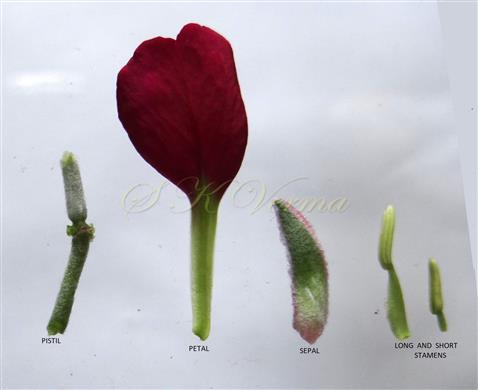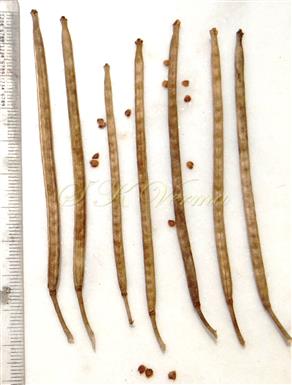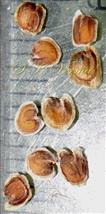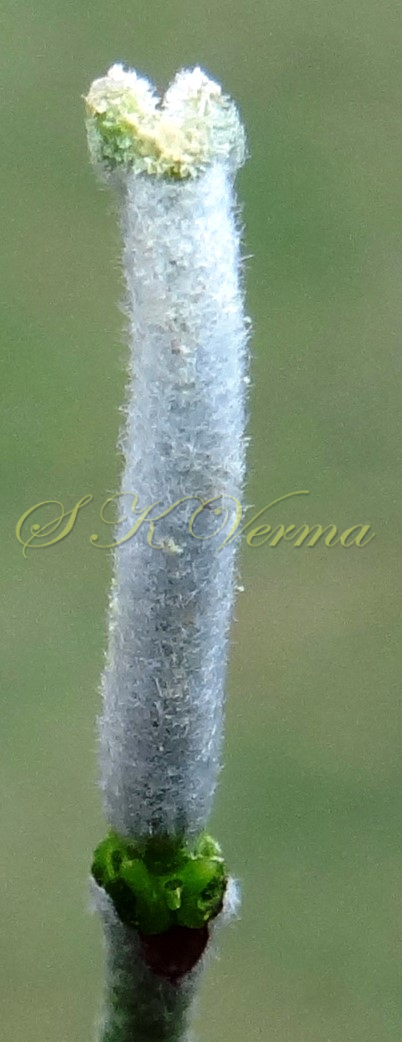ERYSIMUM
Erysimum
L., Sp. Pl. 2: 660.1753; Gen. Pl. ed. 5: 296. 1754; Taiyan et al., Fl. China @ eFloras.org 8: 163; Al-Shehbaz, Fl. North Amer. @ eFloras.org 7: 534; Cheiranthus L. Sp. Pl. 1. 661. 1753; Gen. Pl. ed. 5. 297. 1754; Fl. Pak.@ eFloras.org p.242.
Annual, biennial or perennial herbs, subshrubs or shrubs. Trichomes sessile, medifixed, appressed, 2-rayed (malpighiaceous), parallel to the long axis of stem, leaves, sepals and fruits or 3-5(-8) rayed. Stem erect or decumbent, unbranched or branched basally and/or distally. Leaves basal and cauline; petiolate or sessile; basal rosulate or not, petiolate, blade margin usually entire, dentate, denticulate or sinuate - dentate, rarely pinnatifid or pinnatisect; cauline leaves petiolate or sessile; base cuneate or attenuate rarely auriculate; margin entire, dentate, denticulate, dentate-sinuate or repand (wavy margin). Corymbose raceme usually ebracteate or basally bracteate, rarely bracteate throughout; elongated or not in fruit. Fruiting pedicels are thickened and nearly as wide as fruit, erect, ascending, divaricate or reflexed. Sepals 4, oblong or linear, erect, pubescent, base of lateral pairs saccate or not. Petals 4, yellow to orange, rarely white, pink, red, purple or violet; blade usually obovate or oblong, apex rounded or emarginate; claw prominent, subequalling the sepals. Stamens 6, strongly tetradynamous; anthers oblong or linear. Nectar glands 1,2 or 4, free or confluent. Ovules many (15-100) per ovary. Siliquae dehiscent, linear or rarely oblong, terete, 4-angled, sessile or shortly stipitate, smooth or torulose; valves each with obscure to prominent midvein, pubescent outside. Septum complete, membranous, veinless; style obsolete or short, often pubescent; stigma capitate, entire or 2-lobed. Seeds uniseriate or rarely biseriate, oblong, plump or flattened, margined and winged or not winged.
270 species
Erysimum x cheiri
Erysimum x cheiri
(L.) Crantz, Cl. Crucif. Emend. 116. 1769; Cheiranthus cheiri L., Sp. Pl. 661. 1753; Fl. Pak. @ eFloras.org p. 242.
Annual or biennial subshrubs. Trichomes of stem, leaves, petiole, pedicels, sepals, petals (lower surface), ovary and fruits sessile, medifixed, appressed, 2-rayed (malpighiaceous) mixed with 3-5(-8)-rayed (stellate). Stems erect, unbranched or branched distally (woody at base), 15-80 cm long. Basal leaves rosulate or not, petiolate, petiole ca. 2 cm long, pubescent; blade obovate or oblanceolate, 4-22 cm x 3-12(-30) mm (common size 7-10 cm x 8-10 mm), base attenuate; margin entire to repand (wavy). Corymbose raceme considerably elongating in fruit. Fruiting pedicels divaricate-ascending to ascending, slender, narrower than fruit, 7-15 mm, pubescent. Flowers large, 20-25 mm across, purple, red. Sepals 4, oblong, 1.3-1.5 cm x 3-4 mm, slightly saccate at base, pubescent, green tinged with purple or red. Petals 4, free, limb broadly obovate to suborbicular, 1.3-1.5(-2.2) cm x 1.2-1.7 cm, apex round or emarginate, purple or red; claw prominent, 1.2-1.5 cm long, green-yellow. Stamens 6 strongly tetradynamous; lateral filaments ca. 3 mm long and median-pair filaments ca. 5-10 mm long; anthers linear, 3-4 mm long. Nectaries 2, lateral. Ovary pubescent, 32-44 ovules per ovary; style 1-1.5 mm long, thickened, cylindrical or subconical with a bilobed stigma, slightly spreading above. Siliquae ascending, narrow linear, straight, not torulose (smooth), 3-10 cm x 2-7 mm, compressed, terete, latiseptate (septum broad); valves with prominent midvein, pubescent outside. Seeds ovate, suborbicular, 2-4 mm x 1.5-3 mm, slightly winged, pale brown.
Common Names: Wall Flower
